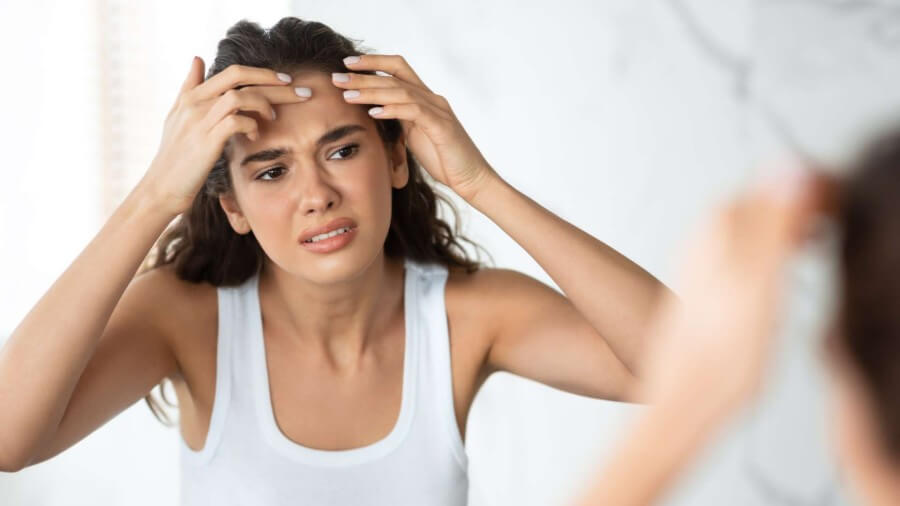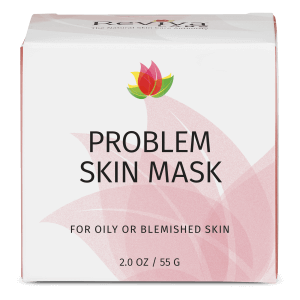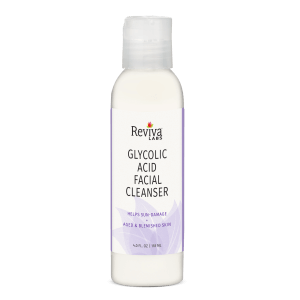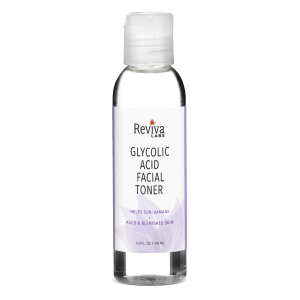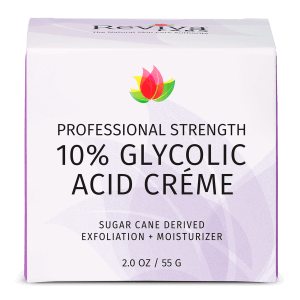Clean Beauty, Ingredients, Natural, Reviva Labs, Skin Care
Why Do We Get Period Acne
Acne can be a frustrating and confidence-damaging skin condition that affects people of all ages and genders. While acne can occur at any time, many women experience a specific type of acne known as period acne, which occurs in conjunction with their menstrual cycle.
The Science Behind Period Acne
To understand why acne breakouts coincide with the menstrual cycle, we must first grasp the hormonal changes that occur during this time. The average menstrual cycle lasts around 28 days and is characterized by hormonal fluctuations. In the first half of the cycle, estrogen is the predominant hormone, while the second half is dominated by progesterone. As the menstrual period approaches, the levels of both hormones decline significantly.
During this hormonal shift, the male hormone testosterone, present in smaller amounts in women, remains relatively stable throughout the cycle. However, as estrogen and progesterone decrease, testosterone becomes relatively higher. This hormonal imbalance can lead to an overproduction of sebum, an oily substance that lubricates the skin.
The increase in sebum production, combined with the compression of pores caused by rising progesterone levels, creates an environment conducive to the accumulation of sebum beneath the skin’s surface. Additionally, higher testosterone levels further stimulate the sebaceous glands to produce excess sebum. The combination of increased sebum and the presence of the bacterium P. acnes can lead to inflammation, breakouts, and acne.
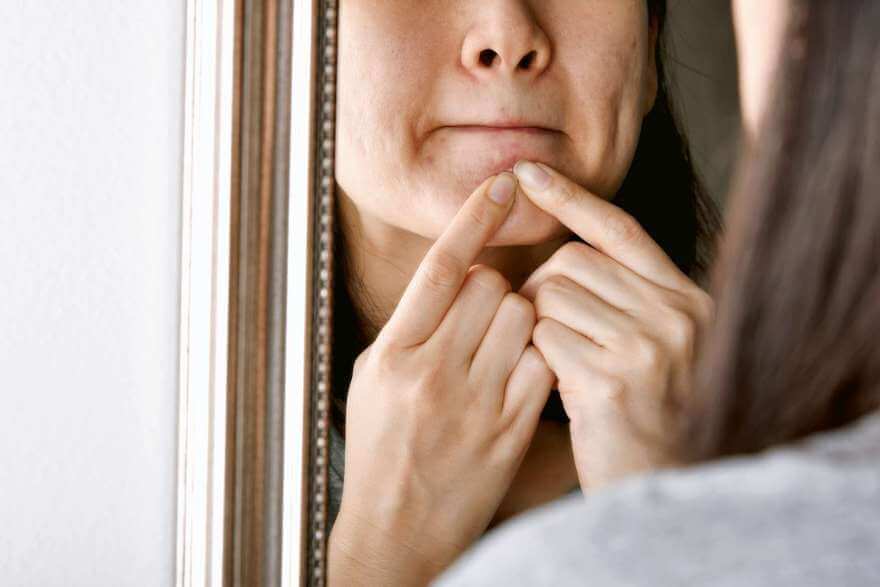
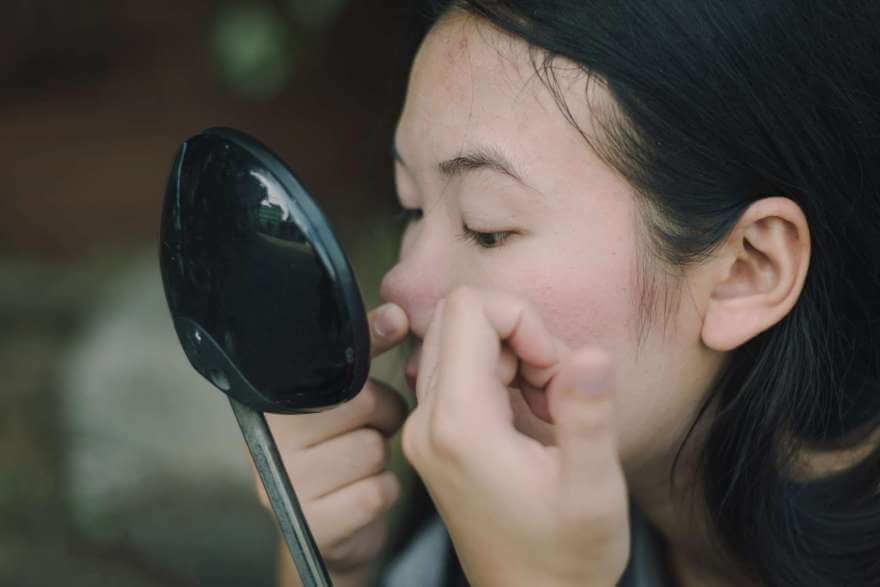
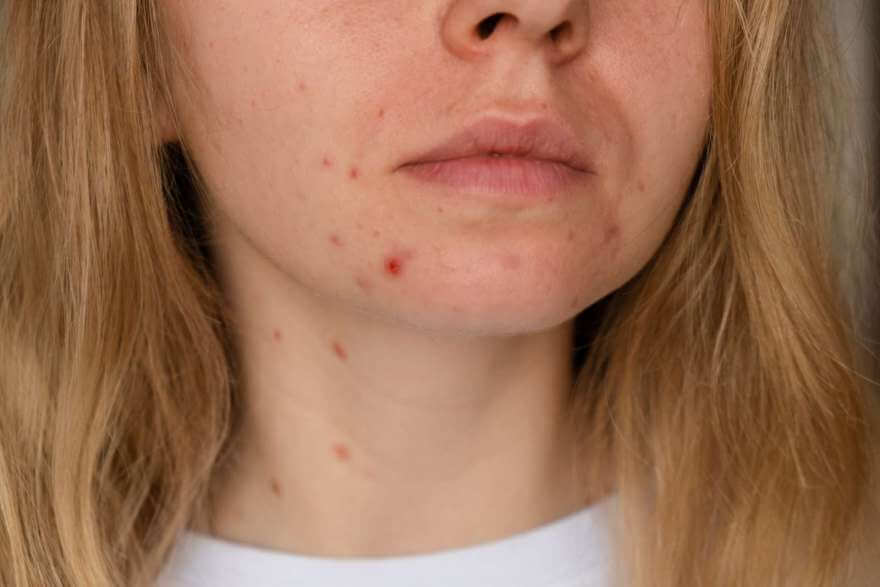
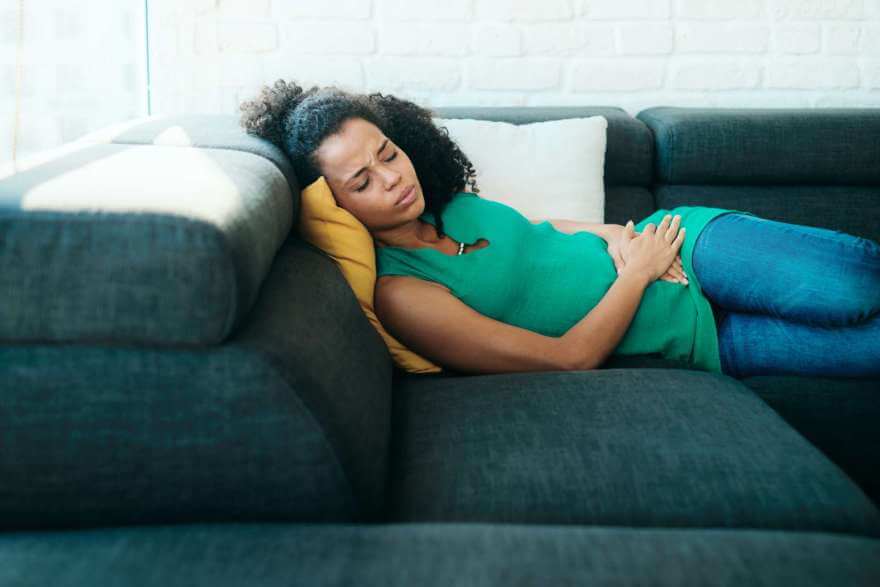
Common Areas for Period Acne
Period acne tends to occur in specific areas of the face, particularly along the jawline and around the chin. These regions are more susceptible to breakouts due to the higher concentration of sebaceous glands. During the menstrual cycle, the excess sebum production and hormonal fluctuations can trigger the development of acne in these areas. It is important to note that attempting to pop or squeeze these acne lesions can lead to further breakouts and potential scarring.
Effective Ingredients for Period Acne
While period acne is primarily driven by hormonal factors, there are several ingredients that are used in skin care formulas that can help alleviate the symptoms and reduce the severity of breakouts. Here are some ingredients to look for:
1. Benzoyl Peroxide
Benzoyl peroxide is a widely used topical treatment for acne. It possesses anti-inflammatory and antibacterial properties, which help reduce swelling and redness associated with breakouts. When applied regularly, benzoyl peroxide can effectively control period acne. However, it may cause dryness, tingling, burning, and increased sensitivity to sunlight.
2. Salicylic Acid
Salicylic acid is a BHA, beta hydroxy acid, known for its anti-inflammatory properties. It works by exfoliating the top layer of the skin, unclogging pores, and reducing acne symptoms. Regular use of salicylic acid can help control period acne and prevent future breakouts.
3. Retinoids
Retinoids, derived from Vitamin A, are commonly prescribed for mild to moderate acne. They possess anti-inflammatory properties and help maintain clear skin by preventing clogged pores. However, they may cause redness, itching, burning, and dryness.
Home Remedies to Complement Treatment
There are several home remedies that can help soothe and reduce acne symptoms. While these remedies may not provide a complete solution, they can be used in conjunction with topical treatments to enhance the overall effectiveness. Here are some home remedies to consider:
1. Tea Tree Oil
Tea tree oil possesses anti-inflammatory and antimicrobial properties, making it effective in reducing acne inflammation and killing acne-causing bacteria. Dilute tea tree oil with a carrier oil, such as jojoba oil, and apply it to the affected areas using a cotton swab.
2. Turmeric
Turmeric has long been used as a natural remedy for various skin conditions due to its anti-inflammatory properties. Applying a paste of turmeric and water or mixing it with honey can help reduce redness, swelling, and pain associated with acne breakouts.
3. Honey
Honey is known for its moisturizing properties and antimicrobial effects. It can help kill acne-causing bacteria and promote healing. Apply a thin layer of honey to the affected areas and leave it on for 10-15 minutes before rinsing off.
4. Warm and Cold Compresses
Using warm or cold compresses can help alleviate pain and reduce swelling associated with acne breakouts. Apply a warm compress to the affected area for 10-15 minutes daily to help drain pus and reduce swelling. Alternatively, a cold compress can be used for 5-10 minutes to reduce pain and inflammation.
It is important to note that home remedies may not work for everyone, and individual results may vary. If you experience persistent or severe acne symptoms, it is recommended to consult with a dermatologist for personalized treatment options.
Period acne, caused by hormonal fluctuations during the menstrual cycle, can be a frustrating and distressing condition. Understanding the science behind acne breakouts and the factors contributing to period acne can help individuals better manage their symptoms. If acne breakouts persist outside of the menstrual cycle or are severe, it is advisable to seek medical attention to determine the underlying cause and receive appropriate treatment. By adopting a holistic approach to skincare and seeking professional guidance, individuals can achieve clearer and healthier skin throughout their menstrual cycles and beyond.



